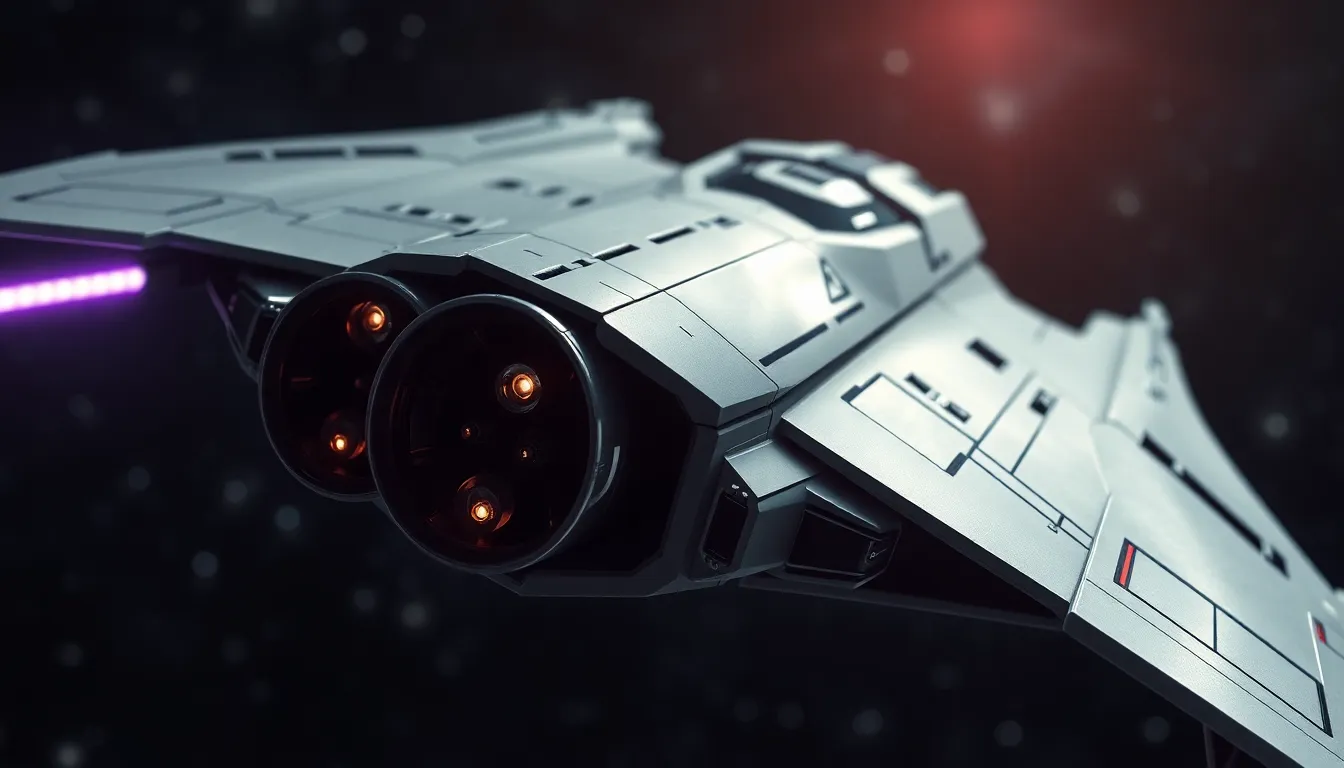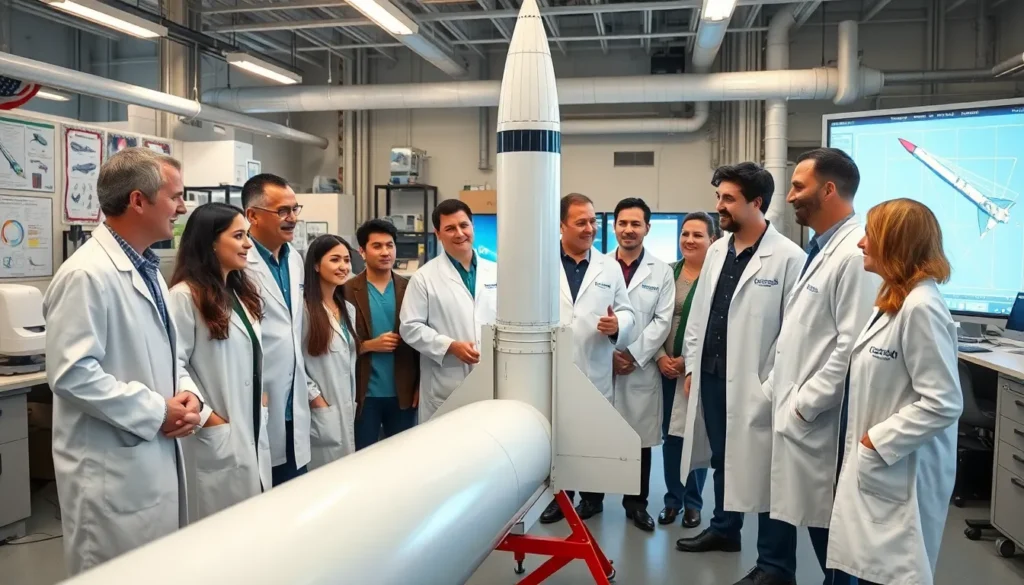When it comes to space travel, humans have always dreamed of zipping around the cosmos like interstellar rockstars. But how fast can we really go with today’s technology? Spoiler alert: it’s not quite as speedy as a sci-fi movie might suggest. While we may not be hopping galaxies just yet, we’ve made some impressive strides.
Table of Contents
ToggleOverview of Space Travel Speed
Space travel speed represents a significant aspect of humanity’s quest to explore the cosmos. Current technology allows for speeds that still fall short of science fiction’s depictions of rapid interstellar journeys.
Current Spacecraft Speed Records
NASA’s Parker Solar Probe holds the title for the fastest spacecraft, reaching speeds of approximately 430,000 miles per hour (700,000 kilometers per hour). This impressive speed allows it to study the Sun’s outer atmosphere. Additionally, the Apollo missions, which took astronauts to the Moon, traveled at about 24,000 miles per hour (39,000 kilometers per hour). While these speeds are groundbreaking, they remain slow compared to the vast distances between celestial bodies.
Comparison with The Speed of Light
The speed of light stands at approximately 186,282 miles per second (299,792 kilometers per second), vastly outpacing human-made spacecraft. If a spacecraft traveled at Parker Solar Probe’s record speed, it would take over 6,700 years to reach the nearest star system, Alpha Centauri. The immense gaps in speed illustrate the challenges faced in making interstellar travel a reality. Current technology limits our exploration capabilities within the solar system, underscoring the need for advancements in propulsion and energy sources.
Limitations of Current Technology

Current space travel technology faces significant limitations that challenge humanity’s quest for high-speed interstellar travel. These constraints stem from propulsion systems and fuel efficiency.
Propulsion Systems
Propulsion systems play a crucial role in determining the speeds at which spacecraft can travel. Chemical propulsion, used in conventional rockets, remains the most common method yet has limited thrust. Ion propulsion offers better efficiency, but speeds are still far from light speed. Emerging concepts like nuclear thermal and solar sails show promise, yet they require extensive research and development. To achieve faster speeds, new technologies must overcome these existing limitations.
Fuel Efficiency and Constraints
Fuel efficiency significantly impacts potential speeds in space travel. Current chemical rockets consume vast amounts of fuel, constraining mission durations and distances. Limited energy sources restrict spacecraft from carrying enough fuel for extended journeys. Innovative propulsion methods could enhance fuel efficiency, yet developing and implementing these technologies involves considerable challenges. Achieving sustainable energy sources may provide solutions for future missions.
Future Prospects for Speed in Space Travel
Future space travel holds promise as scientists explore innovative methods to enhance speed and efficiency. Ongoing efforts focus on developing advanced propulsion systems that could significantly reduce travel time between celestial bodies.
Advancements in Propulsion Technology
Research into propulsion technologies continues to show potential for enhancing spacecraft speeds. Nuclear thermal engines, for instance, can generate greater thrust compared to traditional chemical rockets. Several organizations, such as NASA, are investigating concepts like electric propulsion, which uses ionized gases for more efficient thrust. Solar sails capture sunlight, enabling steady acceleration without fuel consumption. Progress in these areas could lead to faster trips to Mars and beyond, reducing mission durations and expanding exploration capabilities.
The Role of Theoretical Concepts
Theoretical physics plays a crucial role in shaping the future of space travel. Concepts like warp drives and wormholes spark interest among researchers, offering possibilities for faster-than-light travel. Scientists explore the manipulation of spacetime to create shortcuts through the universe. Moreover, advancements in quantum physics could lead to breakthroughs in energy efficiency and propulsion. These theoretical ideas, while not yet practical, inspire current research efforts aimed at revolutionizing how humanity explores space.
Real-Life Application of Speed in Space Missions
Space missions utilize various speeds to achieve objectives efficiently. Current endeavors like NASA’s Artemis program aim to return humans to the Moon and establish sustainable exploration. The Mars Sample Return mission plans to transport Martian soil back to Earth, illustrating the relevance of speed in mission planning and execution.
Current and Upcoming Space Missions
NASA’s Artemis I successfully demonstrated capabilities with its Orion spacecraft. This mission paved the way for further lunar explorations planned for 2024 onward, emphasizing the value of rapid development timelines. Meanwhile, the European Space Agency’s Jupiter Icy Moons Explorer (JUICE) aims to reach the Jovian system by 2031, showcasing advancements in propulsion technology. SpaceX’s Starship also aims for Mars missions, targeting the speed of travel to maintain low mission durations.
Implications for Interstellar Travel
Current space missions highlight significant implications for interstellar travel. Achieving propulsion advancements offers insights into overcoming vast distances. Projects exploring advanced propulsion systems serve as templates for future interstellar endeavors. Concepts like fusion propulsion may dramatically reduce travel times, making distant star systems more accessible. Theoretical approaches continue to inspire research efforts aimed at revolutionizing space exploration, signaling a future where interstellar travel becomes a tangible reality.
Humanity’s journey into the cosmos is just beginning. While current technology allows for impressive speeds like those of the Parker Solar Probe, significant challenges remain in achieving the rapid interstellar travel depicted in science fiction. The limitations of existing propulsion systems and fuel efficiency hinder progress. However, ongoing research into innovative technologies offers hope for the future. Concepts like nuclear thermal engines and solar sails may pave the way for faster missions. As scientists continue to explore advanced propulsion methods, the dream of reaching distant star systems could become a reality. With every advancement, the possibility of exploring the universe at unprecedented speeds draws closer, igniting excitement for what lies ahead in space exploration.





